With four specialties recognized by UNESCO as Intangible Heritage of Humanity, in Turkey the culinary art is based on a varied and tasty gastronomy, the result of the encounter between different cultures and influences.
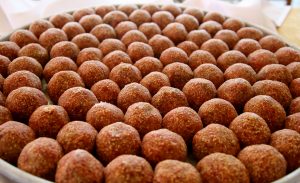
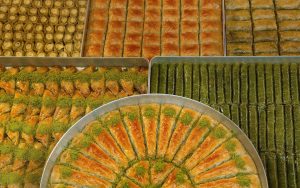
Not only incredible historical and architectural marvels: a trip to Turkey also passes from that set of always fresh flavors and ingredients that are the basis of a culinary evolution appreciated all over the world and that is the result of a perfect fusion of Turkish traditions with the Ottoman, Asian, Mediterranean, Middle Eastern and Balkan ones.
Cereals: from bread to börek
Wheat flour is certainly one of the basic ingredients of many preparations in Turkish cuisine. In addition to ekmek(ordinary white bread), pide(flat bread), simit(donut with sesame seeds) that are consumed daily, this category includes manti(small flour ravioli stuffed with a special mixture of meat, eaten with yogurt garlic and melted butter with paprika) and a great variety of börek(very thin puff pastry, baked or fried, stuffed with cheese or meat). Another typical dish is the pilavwhich, in its most common versions, is of broken wheat and rice and accompanies vegetable and meat dishes.
Meze: aperitif time
Similar to Spanish ‘tapas’, mezeare appetizers served in small quantities that are generally consumed to accompany spirits. Among the tastiest are the humus, chickpea puree in ‘tahina’ and chopped sesame and çiğ köfte, raw meat mixed with very fine cereals and chilli powder.
Meat: kebabs and köfte
There are many variations and many kebab cooking methods, but the most common are şiş kebab(grilled meat cubes) and döner kebab(layers of minced meat and leg of lamb placed on a skewer that turns slowly and is then cut) finely). Another typical dish is köfte, round or elongated meatballs seasoned with special spices, eggs, grated onions, which can be grilled, fried, baked or boiled.
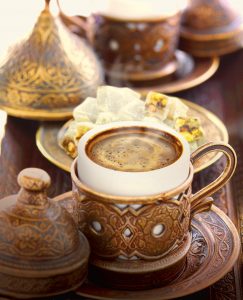
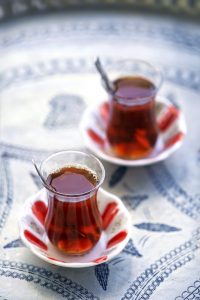
The fish
Turkey is surrounded by four seas – Black Sea, Marmara, Aegean and Mediterranean -, so every year has different fish recipes. From sardines accompanied by garlic and red onions to blue fish with lettuce; from turbot with red lettuce to bonito boiled with celery to grilled mackerel stuffed with chopped onion. In summer there are smaller fish cooked with tomato and green or fried peppers. There alsoa are numerous recipes based on hamsi(anchovy), considered by the Turks the prince of fish.
Vegetables
Even seasonal vegetables are an essential food in Turkish cuisine and among the most common there are certainly aubergines, courgettes and green peppers. The simplest preparation is zeytinyağlı, sautéed in olive oil, but dolmais also very common, filled with mixed meat or rice. The typical summer dish, consumed together with the rice pilav, is instead the karnıyarık: aubergines cut into strips, lightly hollowed and stuffed with tomato sauce and minced meat.
Desserts: not just baklava
Among the most typical desserts of Turkey are those based on milk such as muhallebi, puddings prepared only with starch and rice flour, those based on cereals and those with breadcrumbs. The lokmaare leavened and fried morsels, subsequently soaked in syrup; helvais a mixture of breadcrumbs or semolina flour, mixed with pine nuts and butter, to which is added sugar and milk or water and then cooked quickly; ekmek kadayıfı, special bread cooked in syrup, is accompanied by grated walnuts and served with a thick cream.
Beverages
The Türk Kahvesi, the dense but not particularly strong coffee and the Çay, a very strong tea served in characteristic tulip-shaped glasses, are part of Turkish daily life. In addition to these, you can try the boza, a very dense fermented beverage made from wheat grains and served with a little cinnamon and roasted chickpeas;sherbets, made with sugar, honey, rose, herbs and fresh fruit; and sahlep, a hot drink made with milk and flavored with wild orchid bulbs. For wine lovers, all regions of Turkey host extensive vineyards where native grapes are grown and fermented. The most loved liqueur is rakı, a distillate of pomace flavored with anise seeds.
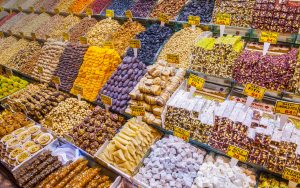 The most beautiful markets in Istanbul
The most beautiful markets in Istanbul
The Spice Bazaar: brightly colored spices are exhibited in this Ottoman era market, where you can also find dried fruit. Fish Market: fruit, vegetable, caviar, pickle and other product stalls. KadıköyProduce Market: reference point for buying the best fresh products where you can browse freely or take a guided culinary walk.
Turkish foods recognized by the UNESCO Intangible Heritage of Humanity
- Keşkek(2011), a traditional Turkish ceremony dish. Based on meat and wheat worked in large pots to the sound of drums reciting prayers, it ends with a real ritual in which the whole crowd of guests at the banquet participates.
- Mesir Macunu Festival (2012) in memory of the dessert for Hafsa Sultan, mother of Suleiman the Magnificent, who was cured of a disease with the invention of a paste, the mesir macunu.
- Culture and tradition of Turkish coffee (2013): the Türk Kahvesi, an intense and penetrating flavor, thanks to a recipe that has been handed down for generations.
- Unleavened focaccia (2016), culture of production and sharing of this type of bread (heritage shared with other countries).
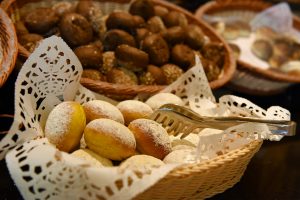
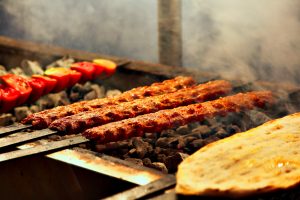
Credits: turchia.it

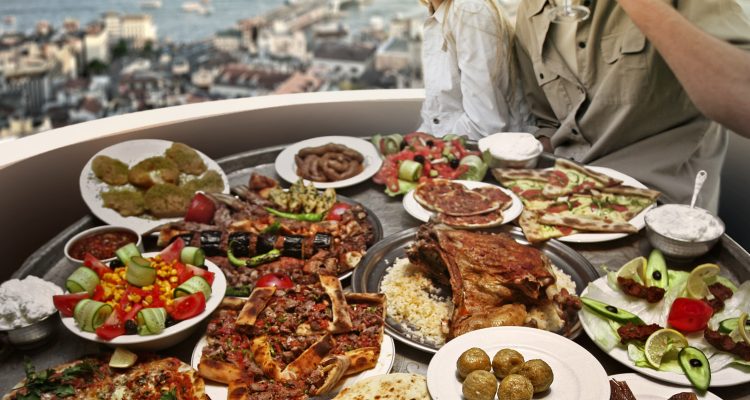
Leave a Reply